An Active Power Sharing Method among Distributed Energy Sources in an Islanded Series Micro-Grid
Abstract
:1. Introduction
2. Series Micro-Grid System
2.1. Configuration of the System
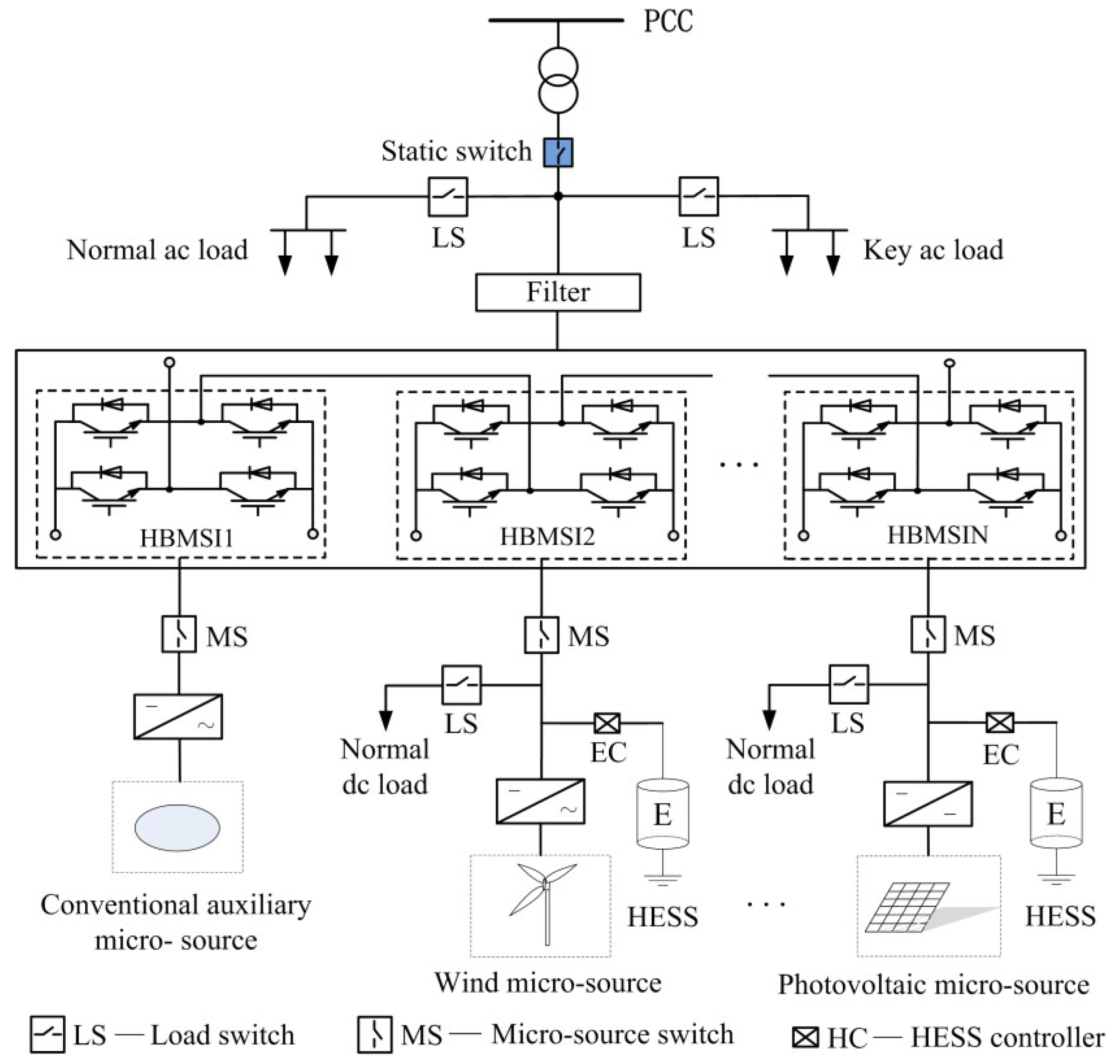
2.2. Converter Architecture of Distributed Energy Sources
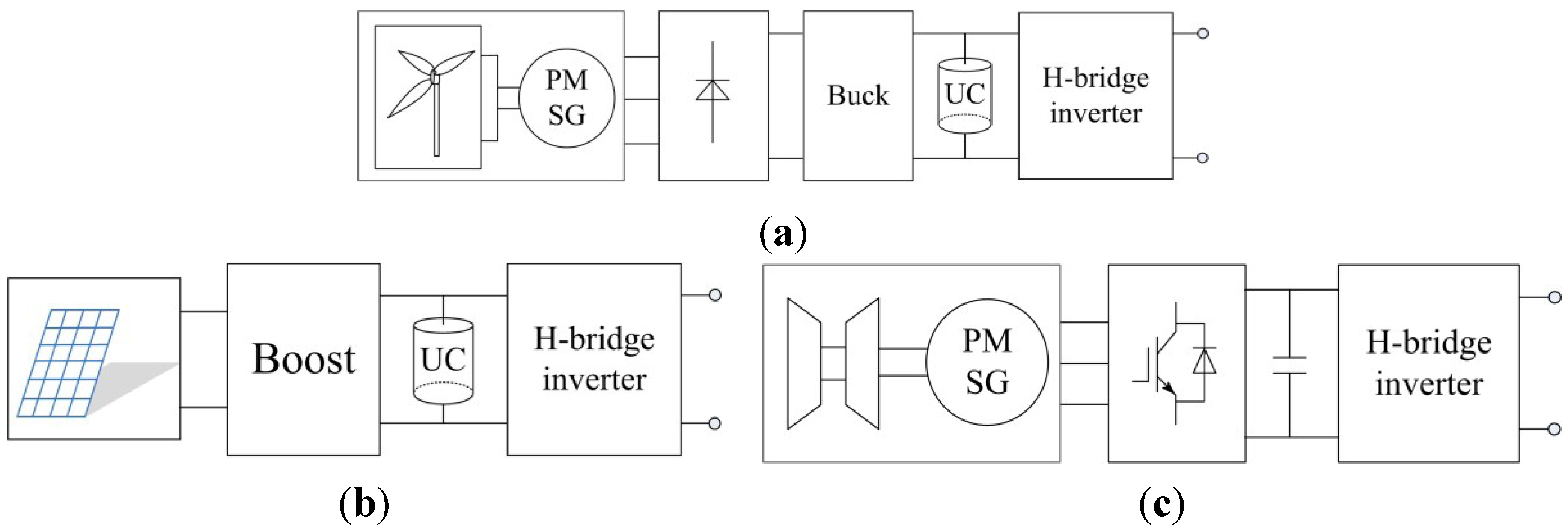
3. Principle and Implementation Method of Power-Sharing
3.1. Power-Sharing Principle

3.2. Power-Sharing Implementation Method via Inverter-Link Control
3.2.1. Master Control for System Stability
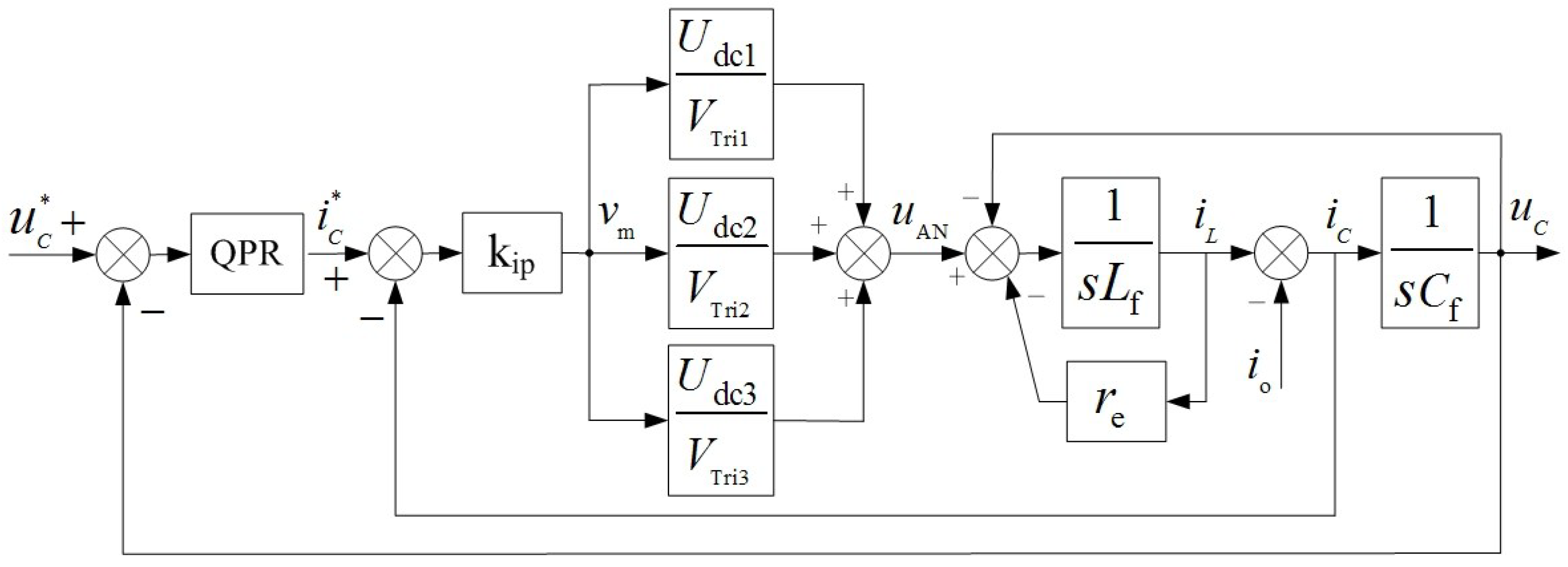
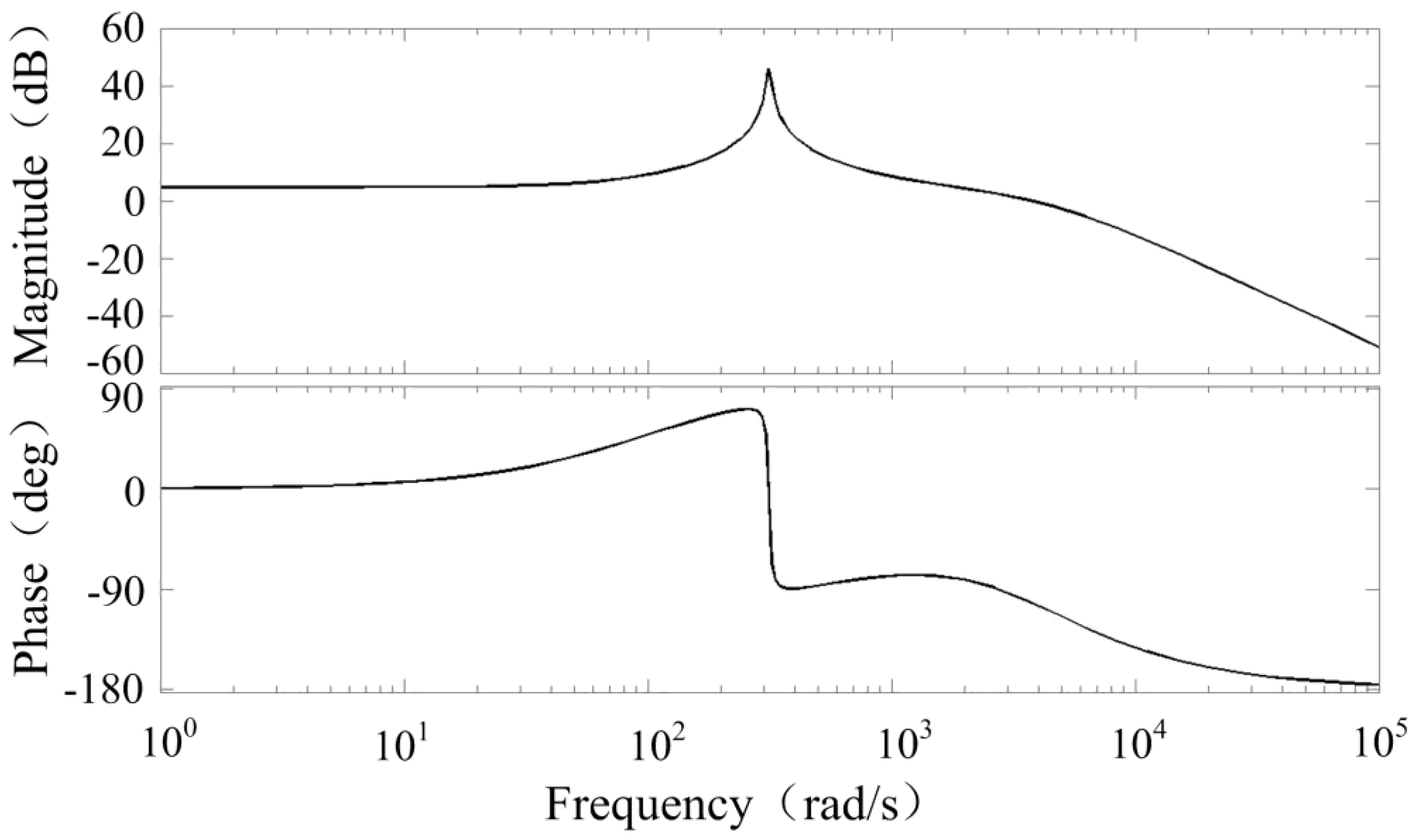
3.2.2. Auxiliary Control for Power-Sharing
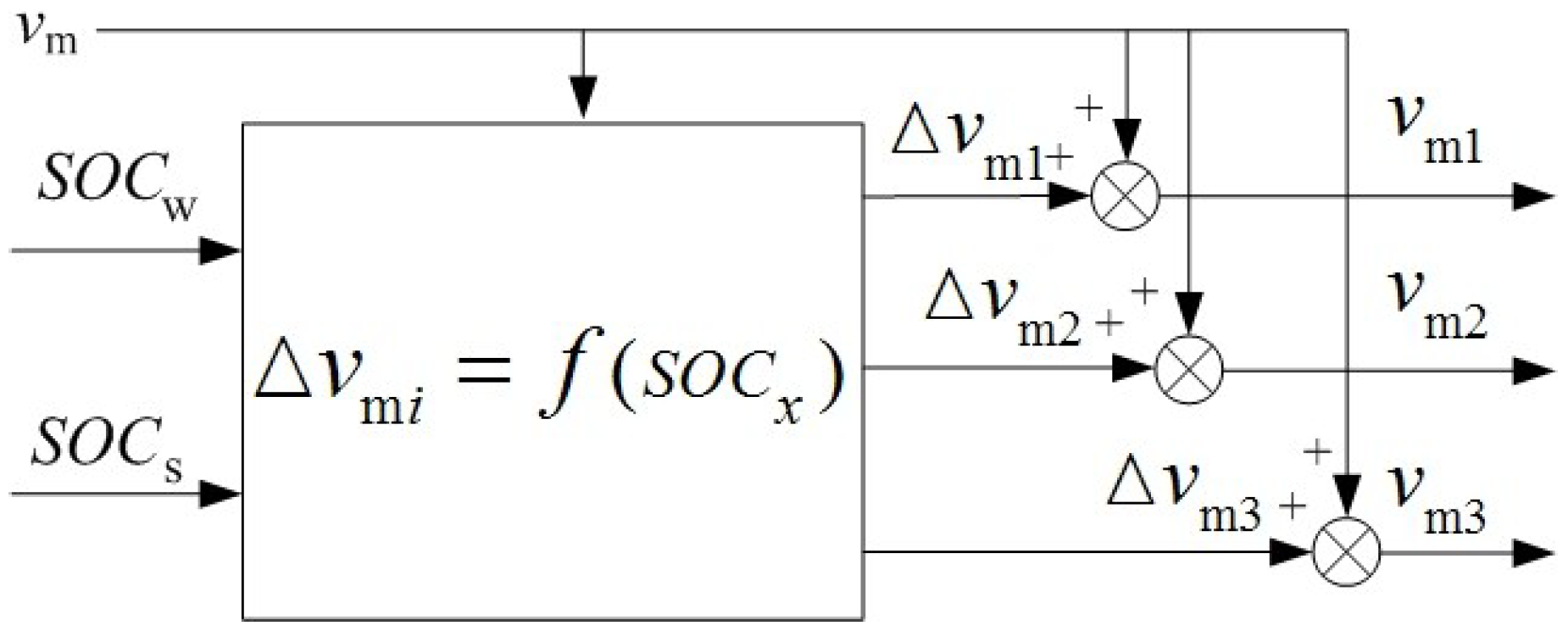

4. Scheduling Strategy of Distributed Energy Sources Based on SOC

5. Simulation and Discussions
5.1. Parameters of the System
| Parameter | Symbol | Value | Parameter | Symbol | Value |
|---|---|---|---|---|---|
| Filtering inductor | Lf | 1 mH | Resonant frequency | ωo | 100π rad |
| Filtering capacitor | Cf | 80 μF | Cut-off frequency | ωc | 5 rad |
| Equivalent resistance | re | 0.3 Ω | Maximum modulation index | mmax | 0.95 |
| Proportional coefficient of current regulator | kip | 0.02 | Reference of dc link Voltage | 140 V | |
| Proportional coefficient of QPR controller | kp | 0.22 | Nominal rms Voltage phase to ground | uc | 220 V |
| Integral coefficient of QPR controller | ki | 25 | Carrier frequency | fc | 2 kHz |
5.2. Single-Phase System


5.3. Three-Phase System


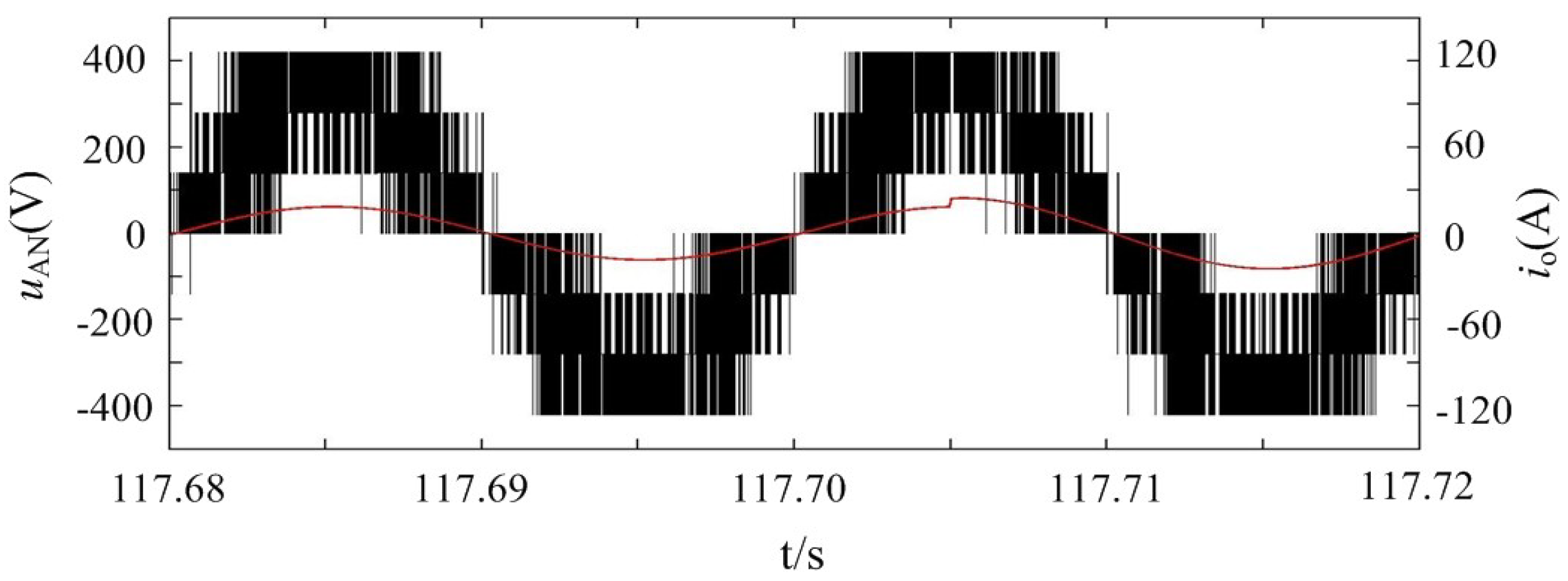
6. Conclusions
Acknowledgments
Author Contributions
Conflicts of Interest
References
- Llaria, A.; Curea, O.; Jiménez, J.; Camblong, H. Survey on microgrids: Unplanned islanding and ralated inverter control techniques. Renew. Energy 2011, 8, 2052–2061. [Google Scholar] [CrossRef]
- Belvedere, B.; Bianchi, M.; Borghetti, A. A microcontroller-based power management system for standalone microgrids with hybrid power supply. IEEE Trans. Actions Sustain. Energy 2010, 3, 422–431. [Google Scholar] [CrossRef]
- Wang, X.-G.; Yang, W.-M. Study on characteristics of a microgrid with micro source inverters connected in series. Power Syst. Prot. Control 2013, 21, 130–135. [Google Scholar]
- Yang, W.-M.; Wang, X.-G. Research on influence of micro-source characteristics on voltage stability of the series micro-grid. Power Syst. Technol. 2013, 9, 2446–2451. [Google Scholar]
- Shi, X.; Jiang, J.; Guo, X. An efficiency-optimized isolated bidirectional DC-DC converter with extended power range for energy storage systems in microgrid. Energies 2013, 6, 27–44. [Google Scholar] [CrossRef]
- Rodolfo, D.-L.; Bernal-Agust, J.L.; Contreras, J. Optimization of control strategies for stand-alone renewable energy systems with hydrogen storage. Renew. Energy 2007, 32, 1102–1126. [Google Scholar] [CrossRef]
- Calais, M.; Agelidis, V.G.; Meinhardt, M. Multilevel converters for single-phase grid connected photovoltaic systems: An overview. Solar Energy 1999, 5, 325–335. [Google Scholar] [CrossRef]
- Rodríguez, J.; Lai, J.-S.; Peng, F.Z. Multilevel inverters: A survey of topologies, controls, and applications. IEEE Trans. Ind. Electron. 2002, 4, 724–738. [Google Scholar] [CrossRef]
- Ertl, H.; Kolar, J.W.; Zach, F.C. A novel multicell DC–AC converter for applications in renewable energy systems. IEEE Trans. Ind. Electron. 2002, 5, 1048–1057. [Google Scholar] [CrossRef]
- Villanueva, E.; Correa, P.; Rodríguez, J. Control of a single-phase cascaded H-bridge multilevel inverter for grid-connected photovoltaic systems. IEEE Trans. Ind. Electron. 2009, 11, 4399–4406. [Google Scholar] [CrossRef]
- Chen, Y.; Xia, M.; Zhu, Z. Photovoltaic grid-connected cascaded inverter based on stepped waveforms and instantaneous value feedback hybrid control. Autom. Electr. Power Syst. 2012, 14, 172–176. [Google Scholar]
- Cecati, C.; Ciancetta, F.; Siano, P. A multilevel inverter for photovoltaic systems with fuzzy logic control. IEEE Trans. Ind. Electron. 2010, 12, 4115–4125. [Google Scholar] [CrossRef]
- Cortes, P.; Kouro, S.; Barrios, F. Predictive control of a single-phase cascaded H-bridge photovoltaic energy conversion system. In Proceedings of the 2012 IEEE 7th International Power Electronics and Motion Control Conference—ECCE Asia, Harbin, China, 2–5 June 2012; pp. 1423–1428.
- Hamzeh, M.; Ghazanfari, A.; Mokhtari, H. Integrating hybrid power source into an islanded MV microgrid using CHB multilevel inverter under unbalanced and nonlinear load conditions. IEEE Trans. Energy Convers. 2013, 3, 643–651. [Google Scholar] [CrossRef]
- Emamian, S.; Hamzeh, M.; Paridari, K. Robust decentralized voltage control of an islanded microgrid under unbalanced and nonlinear load conditions. In Proceedings of the IEEE International Conference on Industrial Technology, Cape Town, South Africa, 25–28 February 2013; pp. 1825–1830.
- Shi, J.-J.; Gou, W.; Yuan, H. Research on voltage and power balance control for cascaded modular solid-state transformer. IEEE Trans. Power Electron. 2011, 4, 1154–1166. [Google Scholar] [CrossRef]
- Kesraoui, M.; Korichi, N.; Belkadi, A. Maximum power point tracker of wind energy conversion system. Renew. Energy 2011, 36, 2655–2662. [Google Scholar] [CrossRef]
- Liu, X.; Jiang, Q. AN optimal coordination control of hybrid wind/photovol-taic/energy storage system. Autom. Electr. Power Syst. 2012, 14, 95–100. [Google Scholar]
© 2014 by the authors; licensee MDPI, Basel, Switzerland. This article is an open access article distributed under the terms and conditions of the Creative Commons Attribution license (http://creativecommons.org/licenses/by/4.0/).
Share and Cite
Yang, W.-M.; Wang, X.-G.; Li, X.-Y.; Liu, Z.-Y. An Active Power Sharing Method among Distributed Energy Sources in an Islanded Series Micro-Grid. Energies 2014, 7, 7878-7892. https://doi.org/10.3390/en7127878
Yang W-M, Wang X-G, Li X-Y, Liu Z-Y. An Active Power Sharing Method among Distributed Energy Sources in an Islanded Series Micro-Grid. Energies. 2014; 7(12):7878-7892. https://doi.org/10.3390/en7127878
Chicago/Turabian StyleYang, Wei-Man, Xing-Gui Wang, Xiao-Ying Li, and Zheng-Ying Liu. 2014. "An Active Power Sharing Method among Distributed Energy Sources in an Islanded Series Micro-Grid" Energies 7, no. 12: 7878-7892. https://doi.org/10.3390/en7127878
APA StyleYang, W.-M., Wang, X.-G., Li, X.-Y., & Liu, Z.-Y. (2014). An Active Power Sharing Method among Distributed Energy Sources in an Islanded Series Micro-Grid. Energies, 7(12), 7878-7892. https://doi.org/10.3390/en7127878





